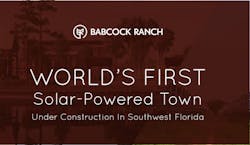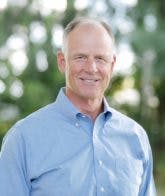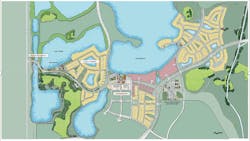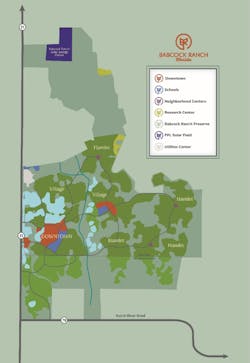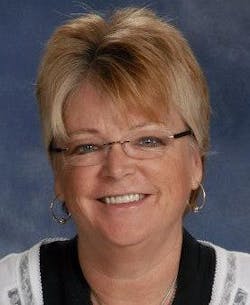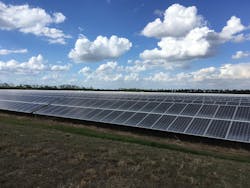If you are searching for perhaps the most sustainable place to live in America, look no further than Babcock Ranch FL, which bills itself as "the world's first solar-powered town." While that claim, itself, is debatable (see Comments at bottom), I still found much to like when I recently visited Babcock Ranch, located on Florida’s Gulf Coast, just a few minutes north of Fort Myers.
The town itself is on an 18,000-acre site that was originally part of the 91,000-acre Crescent B Ranch. It was renamed Babcock Ranch when it was acquired by Edward Babcock in 1914, primarily for timber and rock mining. In 2006, Kitson & Partners, led by former NFL player Sydney "Syd" Kitson, purchased the property and resold 73,000 acres back to the state for permanent preservation. At the time, that was the largest conservation land deal of its kind in Florida history.
Kitson’s vision was of smart growth and preservation working hand in hand. So, of the 18,000 acres retained for the new town of Babcock Ranch, half of that property is also preserved as green space. The other 9,000 acres is being developed around the principles of sustainability and conservation, to meet Kitson’s goal of creating “the most sustainable new town in America.” When the town is completed – it is still in Phase I (see maps below) – it is expected to have 19,500 residences and a population of 50,000.
On August 1, 2016, the Florida Forest Service began managing the Babcock Ranch Preserve as a working ranch, while providing public recreational opportunities compatible with agricultural operations. The Preserve provides habitat for a wide range of species including the Florida black bear and the Florida panther. Last year, motion-activated trail cameras confirmed sightings of at least two panther kittens, presumed to be the offspring of the first wild female panther seen north of the Caloosahatchee River since 1973. The Preserve is also home to the Osceola subspecies of native wild turkey, which is found only in peninsular Florida, as well as to abundant populations of white-tailed deer and northern bobwhite. In all, 13 wildlife species that are listed as endangered, threatened, or "of special concern," have been found in the Preserve. In addition to the many outdoor opportunities in the Preserve, the town itself has five miles of hiking trails already open and a 50-mile hiking and biking trail network will be ready upon completion.
Babcock Ranch, itself, is in unincorporated Charlotte County and was created by an Interlocal Agreement with the County as the Babcock Ranch Community Independent Special District (ISD). Under Florida law, an ISD is a unit of local government with the authority to govern public services and facilities within a limited geographical boundary. According to Lisa Hall, president and CEO of Hall+Media Strategies, it is anticipated that the town will eventually incorporate. Lisa, who has served as the media contact and go-to communications person since Kitson first shared his vision of the project with her in 2005, hosted my tour of Babcock Ranch. She is, as one would expect, very knowledgeable and passionately enthusiastic about the new town.
At Lisa’s suggestion, the first step in my tour of the town was to ride the autonomous shuttle that connects Founder’s Square, the downtown commercial area, with the Community Garden and the Lakehouse and Pool, the first of the amenity centers that every neighborhood will have. It is completely self-driving on a pre-programmed route, no tracks or wires, just touch the green button and go. The vehicle has a top speed of 25 MPH, but runs its route at a modest 10-15 MPH, and as if it was not already unique enough, it is equipped with a genuine trolley bell (some of you may remember the old Rice-A-Roni commercials). Operated as a joint venture with Chicago-based Transdev (www.transdev.com/en/), the self-driving shuttle is the first phase of a plan that will eventually provide a fleet of on-demand, point-to-point, autonomous vehicles controlled from one’s smartphone. There are also plenty of bikes (and other pedal-powered vehicles) to rent or borrow, for those who have gotten the hint about not relying on their cars in the town and don’t want to walk the short distances to shopping, schools, and services.
So where does one start in building a new town – and, particularly, an eco-centric one? Literally from the ground up?
The original development schedule for Babcock Ranch was, like so many other projects in Florida and throughout the country, adversely impacted by the “Great Recession” of 2007. Design and planning activities continued, however, and with the help of Charlotte County officials, Kitson was able to partner with Florida Power & Light (FPL) for construction of a 74.5-Mw solar plant adjacent to the town. Built on 440 acres donated by Kitson, the FPL Babcock Ranch Solar Energy Center broke ground in October 2015 and went online on New Year’s Eve 2016. Powered by more than 330,000 solar photovoltaic (PV) panels, the plant is intended to produce clean, renewable energy in excess of the total amount the town will consume.
A few weeks after work on the solar energy center started, construction of the new town began in earnest. By Earth Day 2016, underground utilities (lines for potable water, reclaimed water, and sanitary sewer) were in place and road paving was ready to begin. Two months later, ground was broken for Founder’s Square, the lakefront downtown district. Now open are dining establishments that include Table & Tap, a farm-to-table restaurant with some of its produce grown in the Community Garden; Square Scoops Coffee & Creamery; and Slater’s Goods & Provisions, a market and café. Located above Slater’s is the Hatchery, a coworking space that includes fixed offices and flex-space. Across the street from Slater’s is the Curry Creek Outfitters, the first retail store in Babcock Ranch, carrying fishing gear, t-shirts, hats, sunscreen, and canoe and kayak rentals. Curry Creek also offers free electric boat tours, with the opportunity to catch the native bass that are abundant in the 220-acre Lake Babcock. That lake, and Lake Timber (approximately 80 acres), are reclaimed mining lakes and are interconnected so that, along with the prevalence of native plants, the risk of flooding is reduced.
Weirs were built to rehydrate the existing wetlands, and the town’s ecosystem is further enhanced with filter marshes and rain gardens. And all the commercial buildings in Babcock Ranch are, or will be, certified by the Florida Green Building Coalition (FGBC).
Banking on education, health
Founder’s Square also is home to the Babcock Neighborhood School. Since schools are not generally built until there are students, and since families with school-age children do not want to live in a place without schools, Babcock Ranch was presented with a chicken-and-egg dilemma. The solution was to make the school a free public charter, K-6 school, open to all students who qualify to attend a public school in Charlotte County. Opened last August, the school quickly reached its capacity of 156 students and a new, 500-student capacity, K-8 school is now under construction a few blocks away. The current school offers a "place-based" environmentally focused "greenSTEAM" education program that integrates science, technology, engineering, the arts, and mathematics, and uses the sustainability and conservation principles of Babcock Ranch to provide opportunities for hands-on, project-based learning about nature, health and renewable energy.
And the Babcock Ranch planners have not neglected health.
Currently under construction is a 26,400-sq-ft health and wellness center that will bring onsite health care to the new town and surrounding communities. Lee Health, which has been providing health care to Southwest Florida residents since 1916, will occupy approximately 80% of the new facility with its clinic, initially providing six exam rooms for physicians and a nurse practitioner offering family medicine, as well as prenatal and pediatric care. The other 20% of the new center will include a six-lane saltwater swimming pool, multiuse basketball half court, and energy-efficient cardio- and strength-training equipment. Pilates, massage, and physical therapy will also be offered in the center.
By the way, if one looks closely, the individual solar PV panels on the commercial buildings (and school) shed roofs can be seen. In addition to the energy provided by FPL’s solar energy center, the solar panels installed on these commercial buildings are the first of the micro-grids that will expand the utility’s solar generating capacity as the town grows. Also located in Founder’s Square, in the parks, are several solar trees similar to the ones about which I wrote here last year.
Since the HPAC Engineering audience consists primarily of HVACR professionals, I would be remiss if I failed to mention the town’s utility plants.
All of the downtown buildings are served with chilled water, distributed through underground lines. The central chiller plant, located on a fenced pad a short distance behind the school, consists of two Trane model RTAC 155-ton high-efficiency air-cooled chillers, each having a full load efficiency of 10.4 EER and a part-load efficiency of 13.9 EER, with a maximum flow rate of 741 GPM. The town’s state-of-the-art nanofiltration water plant draws from a 110-foot deep aquifer and is presently capable of providing 250,000 gallons per day (GPD) of potable water. The waste water treatment plant can currently treat 200,000 GPD of gray water into reclaimed water for irrigation. When the town is completely built-out, the water plant’s capacity will be 6 million gallons per day (MGD) and the treatment plant’s capacity will be 4.5 MGD, with 90% of the town’s gray water being reclaimed for irrigation (every home site has purple pipe stubbed up for this purpose).
In addition to the use of reclaimed water, all the landscaping is mandated to be drought-tolerant, Florida-friendly plants with minimal turf grass. Trees for the town, which has a footprint of less than 10% of the original property, were transplanted from other parts of the ranch and, with 50% of the town’s land reserved for conservation, there are abundant green spaces.
Planning on green growth
There are now seven builders in the town, offering some 56 different floor plans of two- to six-bedroom single-family houses and townhomes. The homes, which range in size from 1,400-sq-ft to nearly 5,000-sq-ft, are priced from $190K to nearly $1M. In addition to the sustainable building practices that have qualified them for FGBC and Florida Water Star certifications, all the homes – regardless of builder or price – will be pre-wired for solar PV and electric vehicle charging stations, and will include natural gas-fired tankless water heaters.
If you happen to be in the Fort Myers area, I strongly encourage you to visit Babcock Ranch. It is a great testament to how one individual’s vision can become an amazing accomplishment and gives real credence to the green principles of people, planet, and profits. If only my office wasn’t two-and-a-half hours away!
A regular contributor to HPAC Engineering and a member of its editorial advisory board, the author is a principal at Sustainable Performance Solutions LLC, a south Florida-based engineering firm focusing on energy and sustainability. He can be reached at [email protected].
COMMENTS
The following e-mail exchange took place with the author after the original online publication of this article...
Environmentalists can disagree
Dear Larry,
I read your article in HPAC Engineering and believe it is very misleading.
I live in N. Naples and have visited Babcock Ranch. It is not a solar-powered town. Babcock Ranch gave land to Florida Power & Light (FPL) to build a solar farm on – similar to the one they have installed in Arcadia. All power from the solar farm is fed into the FPL grid – not to Babcock Ranch. It is not dedicated in any way to Babcock Ranch. So, as an FPL customer in N. Naples, I benefit as much as someone at Babcock Ranch. Since FPL can generate power at about 4 cents/kWh from its newest combined cycle gas plants, the power from the solar farm is still rather expensive, although much more cost-effective than rooftop solar.
As a lifetime environmentalist, I believe we should invest more in energy efficiency, which is much more cost-effective than solar (or wind) power. If the homes and other buildings at Babcock Ranch were made super efficient, they would save far more energy than the adjacent solar farm will produce. Why doesn’t Babcock Ranch require builders to install super high-efficiency air-conditioning, pool and irrigation pumps, and super-insulated building envelopes?
Regards,
James K. Rogers, PE, CEM, CEA, [email protected]
___________________________
The author responds...
Dear Jim,
Thanks for your comments, and for reading HPAC Engineering. First, let me make clear that it is not us, but Babcock Ranch, itself, which claims itself to be "the world’s first solar-powered town”. That said, PV microgrids are mandated for the commercial buildings and strongly encouraged for the homes, which I pointed out. Although you are clearly not a fan of renewable energy, it is the public policy of the state, as stated in Sec. 163.08, Florida Statutes: “…promoting an increased use of renewable energy.”
Solar PV is not, of course, the only energy savings measures incorporated in the town’s design and construction. They have adopted high-efficiency HVAC, tankless hot water heaters, and numerous water conservation measures which, based on the energy-water nexus, also reduce energy use. I have shared your letter with Babcock Ranch and our HPAC.com audience and hope it will stimulate a wider dialogue on the issues that you raise.
Regards,
Larry Clark, QCxP, GGP, LEED AP+
___________________________
Dear Larry,
I agree that the commercial and common areas of the Town have some energy-efficient features – although the developer could still have done much more. And, as I pointed out in my Email, the homebuilders are not incorporating much energy efficiency in their home construction. (Note: That is not unlike their Florida homebuilding practices in general. Let’s talk about that some time.)
You are correct regarding my lack of enthusiasm for renewable energy. This results from 45+ years of my working with energy efficiency, which I believe is much more cost-effective than “renewable” energy in most applications. Why do we promote technologies with a 10-plus-year payback and ignore measures that have a five-year payback and save more energy than the renewable technology would produce? I believe that “special interests” have lobbied for subsidies that keep many “renewable” technologies competitive. Let them compete without subsidies. You might be interested in a Commentary I wrote a year ago for the Naples Daily News, “Florida’s Solar Energy: Myths vs Reality”.
I believe we are both environmentalists. If our mutual goal is to reduce greenhouse gas emissions we should be promoting the technologies that achieve the most bang for the buck. The world does not have limitless financial and human resources, so we must prioritize and apply them in a manner that achieves the most results. In fact, I believe that the renewables vs efficiency debate deserves much more attention. I have offered to publicly debate the solar zealots here in Collier County but get no takers.
Regards,
Jim
___________________________
Babcock Ranch gets the last word...
Writes Lisa Hall, [email protected]: "Some people do not understand our approach of attempting to build sustainability into the infrastructure and into our community-wide standards. We partnered with FPL for utility scale solar power generation, so that renewable energy generated within our footprint would more than meet the total demand of our new town. We did not want our existence to be cause for expanding fossil fuel generation. The fact that people all around us also benefit from the generation on our property is a good thing. As to energy efficiency requirements – we require that all builders achieve Florida Green Building Coalition (FGBC) certification. We are not dictating HOW they get there – but the community-wide standard is absolutely achieving our goal of lowering total energy use. The average HERS field performance scores for all owner-occupied homes and all of the furnished models to date is 60.17 – which is roughly about 30% more efficient than Florida's energy code."








